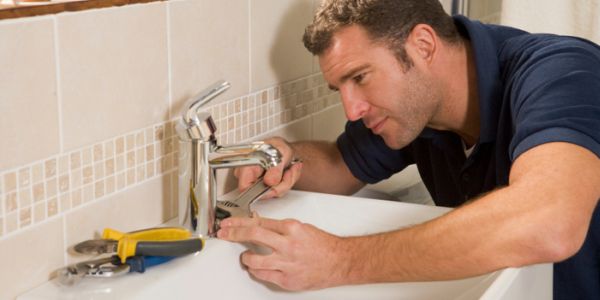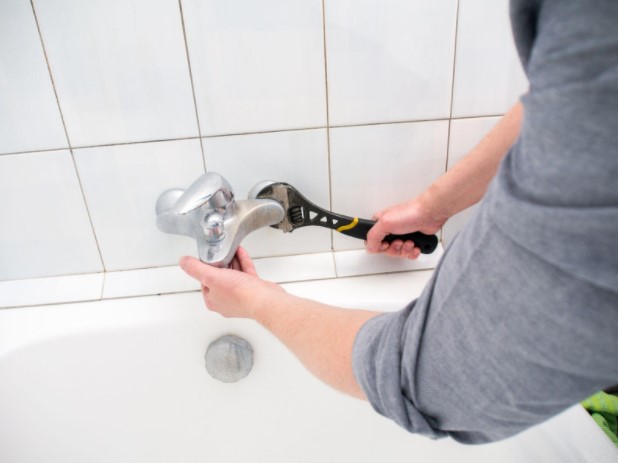Just about everyone has got their unique way of thinking on the subject of How-To Guide On Fixing A Leaking Tap Or Faucet Step.

Introduction
A leaking faucet is not just annoying but can likewise waste a substantial quantity of water and result in enhanced energy expenses. In this step-by-step guide, we'll stroll you through the process of fixing a dripping tap, enabling you to conserve water and cash while maintaining your plumbing system.
Collecting Devices and Materials
Before you start, collect the needed devices and materials for the repair work. You'll usually need a flexible wrench, screwdrivers, replacement washers or seals, plumber's tape, and a cloth or towel to tidy up any spills.
Turning Off Supply Of Water
Find the shut-off shutoff for the impacted tap and transform it clockwise to shut off the water system. If you're unable to find the shut-off shutoff, you might need to shut off the primary water to your home.
Dismantling the Faucet
Use a screwdriver to remove the handle of the faucet, revealing the internal parts. Depending upon the sort of tap, you may require to loosen a cap or collar to access the valve setting up.
Examining for Damages
Once you have actually revealed the shutoff assembly, evaluate it for any signs of damage or wear. Usual culprits of a leaking faucet consist of damaged washing machines, O-rings, or seals.
Changing Faulty Elements
If you determine any type of damaged or worn-out elements, thoroughly remove them utilizing a wrench or pliers and change them with new ones. Be sure to make use of the proper dimension and sort of replacement components for your tap.
Reconstructing the Tap
After replacing the damaged parts, thoroughly reassemble the faucet in the reverse order of disassembly. Make certain that all components are effectively aligned and tightened up to prevent future leaks.
Examining for Leakages
Once the faucet is reconstructed, transform the water system back on and test the tap for leaks. If you observe any type of leaks, confirm the links and tighten them as required.
Ensuring Appropriate Functionality
After confirming that the tap is leak-free, examination its capability by transforming it on and off a number of times. Make sure that the tap operates smoothly and with no unusual audios or resistance.
Cleaning Up
Lastly, tidy up any type of debris or spills from the repair service procedure and dispose of any old or damaged components effectively. Leaving the workspace clean and tidy ensures a specialist coating to your repair service.
Conclusion
Repairing a dripping tap is a relatively straightforward do it yourself task that can conserve you cash on water costs and avoid additional damage to your plumbing system. By following this step-by-step overview, you can take on the fixing with self-confidence and appreciate the benefits of a leak-free tap.
HOW TO FIX A LEAKY TAP IN 5 EASY STEPS
CUTTING OFF THE WATER SUPPLY TO THE TAP
Before replacing your dripping faucet, you may want to start by shutting off the water supply to the fixture. After all, you can’t exactly work on the tap if it constantly sprays water everywhere.
To do so, look for a knob underneath the sink and turn it clockwise. After this, turn the faucet on to let out any water remaining in the water supply line.
If the water doesn’t shut off even after turning the knobs, you can shut off the entire house’s water supply.
WHAT YOU’LL NEED TO FIX A LEAKY COMPRESSION FAUCET
- Flat head screwdriver
- Toothless Plumbing wrench
- Towel
- O-ring
- Hex wrench
- Faucet washer
5 STEPS TO FIX A LEAKY COMPRESSION TAP
Rubber washers are used in compression faucets to tighten the valve seat. Think of it as a mechanism similar to a plastic bottle cap.
These faucets often leak when the rubber washer is sufficiently worn down. So, when you turn off a dripping faucet, it never cuts off the water supply entirely. This means that the problem lies with the washer itself, and replacing it would fix the water leakage.
TAKE OFF THE CAP FROM FAUCET HANDLES
First, you will have to remove the cap present on top of each faucet handle to access the inner working parts of the faucet. Lift the decorative cap using a flathead screwdriver, underneath which you will find a screw head.
Place the decorative cap close by and proceed to the next step.
REMOVE THE TAP HANDLES
Next, depending on the screw type, you can use a flathead or a hex screwdriver to loosen the exposed screw head. Doing so will loosen the faucet handles, allowing you to remove the handles entirely.
If the handles don’t loosen, penetrating oil may help you remove them relatively quickly.
REMOVE THE STEM AND ACCESS THE O-RING
Compression faucets usually have the valve stem and the nut that keeps them in place below the handles. You can use an ordinary wrench to remove the stem nut, pulling the stem out and accessing the O-ring.
Note that wrenches can easily damage the stem nut, so use a toothless wrench for the best results.
Once the stem is out, you will find the seat washer and the O-ring. This ring also keeps the faucet from leaking constantly; if it is worn out, you may need to replace it.
REPLACE THE SEAT WASHER
Seat washers are meant to compress when you turn the handles, which shuts off the water flow through the faucet. If your seat washers are worn out or damaged, you must replace them.
The seat washer may be affixed to the faucet by a screw, which you must unscrew before removing the ring. If it is an Allen screw holding the washer, use an Allen wrench to remove it.
Once the screw is out, remove the rubber seats and place a new one.
FAUCET REASSEMBLY AND TESTING
Now that the component responsible for the leaks has been taken care of, you can reassemble the faucet. Follow the disassembly guide detailed above in reverse for this.
Once reassembled, it’s time to test the fixed faucet. Open the shutoff valves under your sink (or the main water supply) and turn the tap on. If water flows through the faucet after letting some air out, consider it a job well done!
REMOVE THE FAUCET HANDLE
Disassembling a washerless faucet is similar to compression faucets. You may remove the handle using the process detailed above.
REMOVE THE INTERNAL COMPONENTS
Depending on the faucet type, you must follow a slightly different way of disassembling the faucet body.
You must remove the small circular piece to find the cartridge using needle-nose pliers for a cartridge-style faucet. This piece is known as a retaining clip, and you must not damage it.
As for a ball-type faucet, use a toothless wrench to remove the cap and collar. After this, remove the cam washer, faucet cam and ball to find the seal and springs underneath.
Lastly, a ceramic disk faucet requires removing the escutcheon cap to access the disk cylinder. Underneath this cylinder is a neoprene seal responsible for controlling the water flow.
EXAMINE THE PARTS AND REPLACE AS NECESSARY
At this point, you may have found the O-ring in a cartridge faucet. Take the cartridge from the tap and cut off the O-ring using a utility knife. After this, you can replace the ring with one coated in the plumber’s grease. If the damage is extensive, consider replacing the entire cartridge.
When dealing with a ball faucet, you can install new springs, cam washers and valve seats to fix the leak. Ensure that the replacement parts are compatible with your faucet type.
Lastly, replace the neoprene seals under the cylinder for ceramic disk-type faucets. Like with ball faucets, you should ensure the new parts are compatible with the tap. Consider replacing the entire cylinder if the damage to it is extensive enough.
REASSEMBLE AND TEST YOUR FAUCET
Now that all the fixes are made, carefully reassemble the faucet and turn the water supply back on. Test the faucet for any signs of leaks or faults; if there are none, you’re done with the task!
https://woolfplumbing.com.au/blog/how-to-fix-a-leaky-tap-in-5-easy-steps

We had been introduced to that write-up about How to Fix a Leaking Tap Without Getting Professional Help through an associate on our other web blog. For those who liked our blog entry if you please make sure you remember to pass it around. I recognize the value of your readership.
Visit Site
Comments on “Skilled Advice for Resolving a Leaky Tap: Step-by-Step Guide”